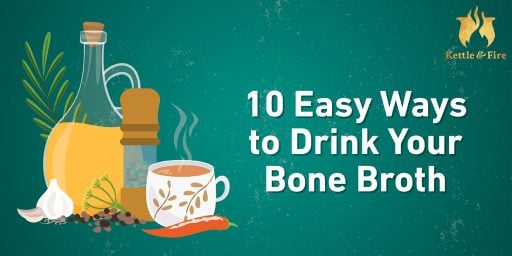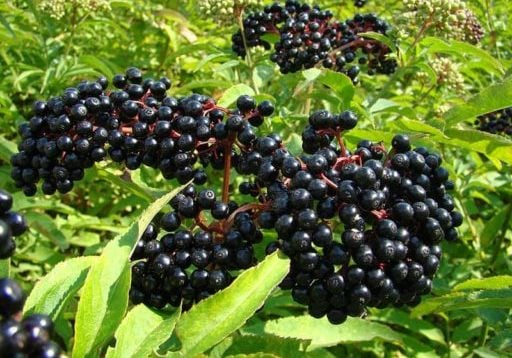The Dangers of Glyphosate in Food (and what you can do about it)
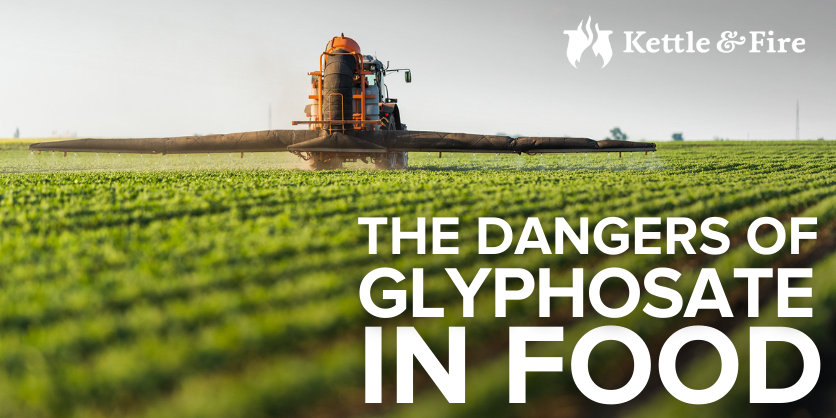
A tractor uses a sprayer to disperse pesticides in a field.
More often than we’d like to admit, we hear about food recalls due to contaminants. It can occur with fresh meat, like ground beef – or fresh produce, like lettuce.
Our food supply is known to be perpetually tainted with something that can cause documented harm to our bodies – and, still, the agencies meant to protect us from such harm have ignored or denied it in the too-recent past.
Specifically, we’re talking about glyphosate.
There has been, and continues to be, much debate over the effects of glyphosate in the food chain. The US Environmental Protection Agency (EPA) says glyphosate is “practically non-toxic and not an irritant”.
But in contrast, scientists at the International Agency for Research on Cancer (part of the World Health Organization) report that glyphosate is “probably carcinogenic”, aka cancer-causing.
Before we get into the dangers of glyphosate, let’s look at what it is and how it can potentially get into our bodies.
What is Glyphosate?
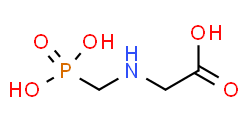
So what is glyphosate and how does it get in our food?
Glyphosate is a powerful herbicide. Commercially, it’s most commonly known under the brand name “Roundup” and in 1974, The Monsato Company began selling Roundup as a weed killer.
The chemical compound of Roundup is so powerful, it destroys almost all plant matter it touches by preventing plants from creating certain proteins they need to grow.
After creating this product, Monsanto began looking at ways to ensure that it would only kill weeds – and not completely destroy entire crops. The company began to develop seeds for plants that resisted glyphosate and did not die when sprayed with Roundup so farmers could produce higher yields with less risk (to the farmers).
These kinds of plants are usually what people are referring to when talking about GMOs, aka Genetically Modified Organisms.
More widespread use of Roundup began in the mid-90s and, since then, the use of this chemical and the spread of glyphosate has skyrocketed.
This is primarily how glyphosate gets into the food system: a farmer plants GMO seeds, soaks the crop in Roundup, and then sells that crop to food manufacturers.
That food could be:
- The lettuce in your salad.
- The wheat of your bread, cake or cereal.
- Your oats or oat products.
- The food given to beef cattle.
- The milk from dairy cows.
- The berries in your breakfast smoothie.
- Or even your baby’s formula.
Not surprisingly, Norwegian researchers even found that soybeans grown from “Roundup Ready” (GMO) seeds actually contained glyphosate within the beans themselves. Yikes.
Even The Monsanto Company admitted that glyphosate exists on and in crops that are heavily sprayed with Roundup – such as corn, canola and cotton.
There is also a process known as desiccating, in which farmers douse their crops with glyphosate just before harvest. This is most often done to grains in order to make sure they dry out sufficiently for storage and transport. AND because this process essentially “kills” the plant and dries it out, this method has been used on supposed “Non-GMO” crops as well.
It doesn’t end there.
Glyphosate actually binds to soil and can remain there for up to 6 months! This means that any food grown in the same area could still absorb glyphosate, even if not sprayed with it directly.
Here’s a scary thought: It is estimated that two-hundred and fifty million pounds of glyphosate is used in the USA alone, every year.
Glyphosate has been found in water supplies, probably from run-off from fields. It’s also been found in foods like Oreos, Quaker Oats, Cheerios, hummus, and dog food. And, it’s even been found in breast milk.
Is Glyphosate Bad For You?

Reading above, it’s easy to see how glyphosate is getting into our bodies via our food and water supply.
But is glyphosate really dangerous?
Over the last ten years, especially the last 3-5, more studies have been done to provide information regarding the dangers of glyphosate.
Stephanie Seneff, a senior research scientist with the MIT Computer Science and Artificial Intelligence Laboratory, has been studying the long-term effects of glyphosate on humans for a long time. As she puts it, the use of Roundup and glyphosate is “a gigantic experiment that has been going on for 40 years.”
More research is needed, but there is increasing evidence that glyphosate is harmful to humans, on multiple levels.
For example, an analysis of studies published in 2019 found that exposure to glyphosate could increase the risk of non-Hodgkin’s Lymphoma (NHL) by a whopping 41%.
A more recent study, published in July 2020, found that glyphosate and Roundup can affect male fertility. These studies reported that glyphosate and Roundup can reduce sperm motility and mitochondrial activity, as well as compromise sperm viability and integrity.
Furthermore, glyphosate is a known hormone disruptor. Australian researchers found that low levels of glyphosate led to a drop in the hormone progesterone. This study demonstrated that Roundup as a source of glyphosate, combined with other chemicals, created an atmosphere of hormone disruption.
Glyphosate can also negatively impact gut bacteria. You may have heard the expression, “Health begins in the gut”. That’s because about 70% of our immune system and immune responses are led by the gut microbiome – the complex ecosystem of organisms that reside in the digestive system.
The way glyphosate can impact gut bacteria is preventing good flora growth and supporting bad flora growth (such as E. coli), which can ultimately destroy the balance of the gut microbiome. It can also deplete the body of specific minerals and amino acids, can impair metabolic enzymes, and can cause the body to become antibiotic-resistant.
Many experts believe that glyphosate and GMO plants made to absorb/withstand Roundup are responsible for the sudden surge in leaky gut and gluten sensitivity we see today.
Glyphosate Tricks Your Body
In most cases, if the body absorbs a toxin, there’s a built-in filtration system to get rid of it. Most of the hard work is done by the liver, as toxins are stored in fat when the body is overloaded and cannot deal with them immediately. It’s a good system.
Unfortunately, in a world filled with so many environmental toxins, our delicate biological systems are constantly confronted with toxins and can easily become overwhelmed. It’s logical that if our food is filled with glyphosate and we’re constantly consuming even more…
Our bodies can easily get overwhelmed trying to filter out the bad stuff to keep us in homeostasis (balance).
That’s a challenge in and of itself, but glyphosate is one of the worst toxins, not only because it permeates the food we eat, remains in the earth when we grow something else, enters our water supplies, and invades our bodies…
But it also mimics glycine – an important amino acid. One role of glycine is to support the Central Nervous System (CNS), and the body uses glycine to create glutathione, which is a powerful antioxidant that helps the liver detoxify.
But instead of helping create glutathione, glyphosate can trick the body into absorbing it and storing it in tissues and organs. The body can mistake glyphosate for the healthy kind of glycine needed for proper detoxification.
When this happens, the body is not only taking in a toxin while working to detoxify, it’s also keeping the toxin stored which creates more issues in the body.
MIT researcher Stephanie Seneff said: “I see very strong correlations between the rise in a long list of debilitating autoimmune, neurological, and oncological diseases exactly in step with the rise in use of glyphosate on core crops.”
With all this information about how easy it is to accidientally consume glyphosate – and the many examples of how glyphosate can affect the body – the next logical question is…
How Can We Avoid Glyphosate?
Thankfully, as research grows, some governments are taking action. Austria and Germany have banned glyphosate completely, and more than 40 countries have “restricted or banned the use of glyphosate in food supply productions, or areas that can lead to inadvertent pollution of water, etc.”
In the United States and Canada, there is unfortunately not much being done to stop the use of glyphosate in commercial farming. 
Eating Organic Isn’t Enough
You may be thinking, “If herbicides are the problem, I can just eat organic foods.”
While that would seem like an easy solution, buying organic is not enough to avoid glyphosate.
Because glyphosate has been used so extensively, there are traces of it almost everywhere.
- Was the water used for irrigation or for animals contaminated?
- Was it still in the earth where the organic food is being grown?
- Did it travel through the air to a neighboring field?
Are we implying there can be glyphosate in organic food?
Absolutely.
It’s probably disappointing to discover that even eating organic foods doesn’t guarantee freedom from glyphosate…
But there’s still a solution!
If we choose foods that are Certified Glyphosate Residue Free – like Kettle & Fire bone broths and soups – then we eliminate the risk of accidentally ingesting it.
At Kettle & Fire, we’re proud of our certification, because it means we’re futhering our mission to have a positive impact on our food system.
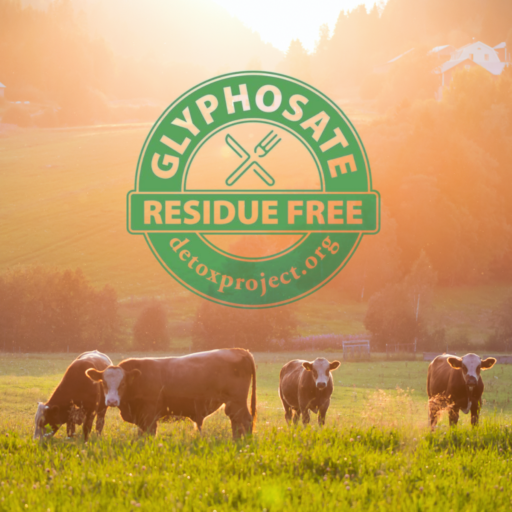
Not only are our bone broths Glyphosate Residue Free, but they also contain the amino acid glycine, which (as you read above) creates glutathione and can help purge the existence of glyphosate.
Other Foods to Boost Glutathione
There are many foods that contain glycine & have properties to boost glutathione and enhance antioxidant and anti-inflammatory activity. Here’s a list of some:
- Broccoli
- Kale
- Cauliflower
- Bananas
- Lemongrass
- Spinach
- Turmeric
- Miso
- Legumes
- Ginger
You can find even find some the foods above (like cauliflower, lemongrass, turmeric, miso, and ginger) in some flavors of our bone broths and soups.
And, lest we forget to remind you, bone broth is one of the best foods for healing the gut.
That’s partially because products made from clean meats and poultry contain beneficial amino acids like glycine and glutathione. These amino acids help keep your gut working properly, aiding digestion and boosting immune function.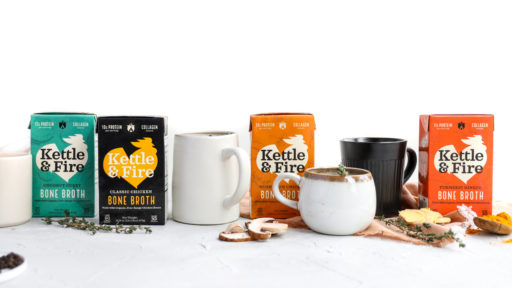
So why not pair the wonderful benefits of the foods above with a glyphosate-free bone broth or soup?
All of our products are lovingly crafted with an emphasis on clean, great-tasting nutrition that you can FEEL working.
And as you sip on our body-loving broths, know that we will continue to prioritize initiatives for a better food system, keeping the health & happiness of our customers at the forefront of our efforts.
Thanks for reading – Cheers!
Resources & Research:
- https://www.sciencemag.org/news/2018/02/who-rebuts-house-committee-criticisms-about-glyphosate-cancer-warning
- http://npic.orst.edu/factsheets/glyphogen.html#body
- http://npic.orst.edu/factsheets/archive/glyphotech.html
- https://www.sciencedirect.com/science/article/pii/S1383574218300887
- https://www.cnn.com/2019/02/14/health/us-glyphosate-cancer-study-scli-intl/index.html
- https://www.ecowatch.com/roundup-cancer-1882187755.html
- https://pubmed.ncbi.nlm.nih.gov/25805724/
- https://www.ctvnews.ca/health/weed-killing-chemical-found-in-pasta-cereal-and-cookies-sold-in-canada-study-1.4086615
- https://pubmed.ncbi.nlm.nih.gov/24491722/
- https://www.ncbi.nlm.nih.gov/pmc/articles/PMC5705608/#B37
- https://www.ncbi.nlm.nih.gov/pmc/articles/PMC5705608/#B38
- https://pubs.rsc.org/en/content/articlelanding/2018/em/c8em00119g#!divAbstract
- https://www.ncbi.nlm.nih.gov/pmc/articles/PMC6619856
- http://www.sciencedirect.com/science/article/pii/S0278691513003633
- https://www.ncbi.nlm.nih.gov/pubmed/24678255
- https://www.carlsonattorneys.com/news-and-update/banning-roundup
- https://www.baumhedlundlaw.com/toxic-tort-law/monsanto-roundup-lawsuit/where-is-glyphosate-banned/
- https://people.csail.mit.edu/seneff/2017/SamselSeneff_Glyphosate_VI_final.pdf
- http://www.huffingtonpost.com/carey-gillam/fda-tests-confirm-oatmeal_b_12252824.html
- http://www.theepochtimes.com/n3/2190679-glyphosate-for-breakfast/
- https://www.naturespath.com/en-us/blog/are-you-eating-glyphosate-organic-farming-can-help/
- https://www.ncbi.nlm.nih.gov/pmc/articles/PMC6619856
- https://nutritiondata.self.com/foods-011094000000000000000-2.html?
- https://nutritiondata.self.com/foods-011094000000000000000-3.html?
- http://www.whfoods.com/genpage.php?tname=foodspice&dbid=114
- https://www.ncbi.nlm.nih.gov/pmc/articles/PMC4897076/
- https://www.researchgate.net/publication/41945015_Detoxification_and_antioxidant_effects_of_curcumin_in_rats_experimentally_exposed_to_mercury
- https://food.ndtv.com/food-drinks/7-wonderful-benefits-of-lemongrass-tea-the-healing-brew-1459468#:~:text=Lemongrass%20tea%20is%20your%20detox,body%20by%20relieving%20fluid%20retention.&text=Lemongrass%20is%20nature’s%20formula%20for%20taming%20high%20blood%20pressure.
Consumer reviews, testimonials and opinions are based on the experiences of individual Kettle & Fire consumers. Kettle & Fire is not suggesting that any individual consumer’s experience with our products is representative of the experience of others. These testimonials are voluntarily provided and are not paid for or offered in exchange for free products..



